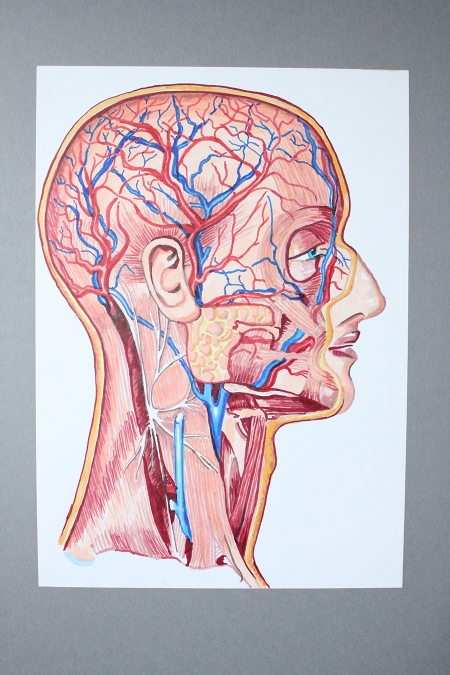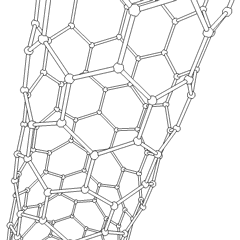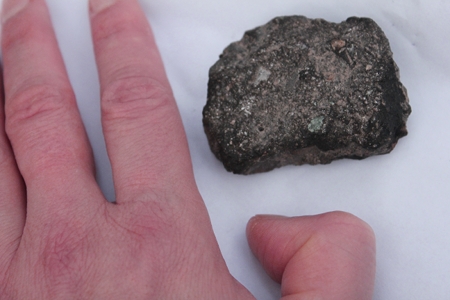Archive for the 'nano' Category
au courant au courant
Wednesday, January 9th, 2013the post au courant got a little addition in order to make it more au courant.
Holograms Reveal Brain’s Inner Workings
Wednesday, August 17th, 2011
“HirniKoppic”, Copic Markers on paper, by artist “nettwürg” on the occasion of the rumors about the possibility of closing the Medizinhistorisches Museum (Berlin Medical Historical Museum) of the Charité.
Using Digital Holographic Microscopy (DHM) researchers of EPFL gathered quite some interesting images from inside the brain:
->Holograms Reveal Brain’s Inner Workings.
When do we get to see brain images from image imaginations? and when can others recognize these?
New economic schemes in games
Friday, March 25th, 2011In the blogpost on the return of investments I proposed to use games for testing new economical scenarious. I currently try to make an article out of that.
In the draft I sofar have given an overview about games and roughly motivated why I think that it may be a good idea to introduce new economical schemes. In particular I talk about the limitations of this planet, design and in particular about something that I dubbed “recycling-run-away effect”.
Amongst others I also try to line out why I think that the nuclear waste problem may be a worse problem than the safety of reactors (see also the first post on Fukushima).
Comments are appreciated, here is the draft:
update (06072015) :
It currently looks as if an article format is rather not suited for the writings and findings made within the context of the game draft article. It is also still not clear wether this project will ever be finished and if in which form. You may though still find on and off some informations in this context, likethis blog post is an example.
update (06072011) : This blog post is now used as a referrer URL for the game scheme article, thus newer versions of the article and comments will be uploaded more or less regularily. Please note that this offer to our randform readers costs our private money. Since randform is currently purely financed by Tim Hoffmanns income as a math professor, we may eventually be forced to reduce or close this offer, depending on download rate, inflation, etc. Most of the content of the article is also spread on the Azimuth project like the section about the Game environment. The Azimuth updates are usually more current.
The most essential content article of the article was presented on July 1st at the open knowledge conference 2011 in Berlin:
Talk: “Testing new toy economies/political structures in MMOGs” at slideshare.net
older versions of the article:
on high teach speed
Sunday, January 25th, 2009DNA sculptures
Tuesday, December 23rd, 2008Last friday I attended a talk, which was organized by the munich center for nanoscience. The talk was given by Tim Liedl from the Shih Laboratory.
US science debate 2008
Tuesday, February 12th, 2008Sheril Kirschenbaum and Chris Mooney of the blog the intersection and coorganizers and committee members of science debate, which is
A concerned citizens initiative now cosponsored by the AAAS, the Council on Competitiveness, the National Academy of Sciences, the National Academy of Engineering, and the Institute of Medicine, and signed by over 100 leading American universities and other organizations.
announced yesterday the official invitation date and location (see also NY times article) of the sciencedebate 2008.
The initiative invited the US american presidential candidates Hillary Clinton, Mike Huckabee, John McCain, and Barack Obama to join in for a debate on science & economy.
From the science debate website:
Given the many urgent scientific and technological challenges facing America and the rest of the world, the increasing need for accurate scientific information in political decision making, and the vital role scientific innovation plays in spurring economic growth and competitiveness, we call for a public debate in which the U.S. presidential candidates share their views on the issues of The Environment, Health and Medicine, and Science and Technology Policy.
The science debate is a great initiative and I hope that they will get all candidates to discuss the future of (US) science and in particular its societal role, although I fear a bit that given the current republican policy on budget cuts in science the candidates John McCain and Mike Huckabee may prefer to stay away. ??? (I hope not!)
In 3 earlier blog posts (please see first here -together with the comment section then here and then here) I tried to explain that “the increasing need for accurate scientific and economic information in political decision making” could be partially met by an organisatorial framework which comes from the global science community. I envisioned an university organized internet platform (which I called “consciencement”) . On this platform scientific questions could be globally discussed by experts and could be put under science poll in order to provide a definite (however not final, and possibly ranked) “science answer” to certain questions, so that politicians would have an orientation on “the” scientific opinion about an issue.
There is an interesting conference called Science in the 21st Century coming up this year in which questions of science, society and the exchange and management of information will be discussed. Among others (from the conference website):
Information exchange and management, the scientific community, and the society as a whole can be thought of as a triangle of relationships, the mutual interactions in which are becoming increasingly important.
The conference is organized by Michael Nielsen who is writing a book on the future of science but who also proved to be an expert in quantum information theory (blog) and Sabine Hossenfelder at the Perimeter Institute in Canada, who is a theoretical physicist, who is in particular interested in black holes.
Sabine Hossenfelder actually commented on my proposition of the internet platform.
via Asymptotia
Bio-inspired Complex Networks in Science and Technology From Topology to Structure and Dynamics
Saturday, December 29th, 2007Just a link to an upcoming event (April 14 – May 9, 2008) by the Max-Planck-Institut for complex system on Bio-inspired Complex Networks in Science and Technology, From Topology to Structure and Dynamics
nanohedron
Tuesday, November 6th, 2007
image source
Peter Kutchukian, a current graduate student in the Department of Chemistry and Chemical Biology at Harvard, has started a new nanotechnology-related art/gallery site, www.nanohedron.com: “Nanohedron aims to exhibit scientific images, with a focus on images depicting nanoscale objects. The work ranges from EM images of nanoscale materials to graphical renderings of molecules. Scientific images lying outside the realm of nanoscience such as algorithmic art will also be considered.”
via somewhereville
no light light pulses
Thursday, October 25th, 2007
Todays title of the magazine nature reported about an experiment where the electron transport in a crystall could be observed within an range in the order of 10 attoseconds (10*10^{-18}s= 10 as).
(more…)
